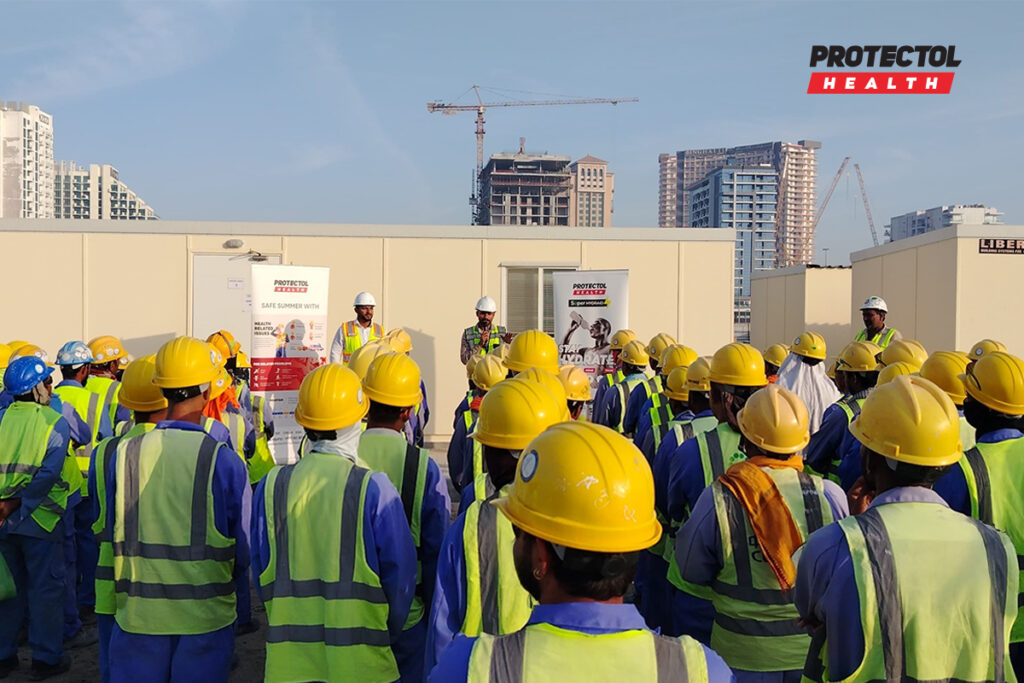
Today is World Safety Day, a powerful reminder that we must prevent accidents and illnesses in workplaces worldwide. This crucial global effort emphasizes the importance of equipping people with the tools to create real change. This post explores key safety areas, highlighting essential training like First Aid and Heat Stress Awareness, to provide you with actionable knowledge for building safer and healthier work environments.
The International Labour Organization (ILO), a United Nations agency, promotes World Safety Day as a key initiative to advance safety worldwide. The day’s importance is underscored by its efforts in increasing global awareness of the extent of workplace injuries and illnesses, highlighting the necessity of preventive measures, encouraging the development of a preventive safety and health culture where risks are proactively managed, remembering individuals who have suffered or died due to workplace incidents and diseases, and motivating collaborative action among governments, employers, and workers to foster safer and healthier workplaces.
Building a Safe and Healthy Workplace Through Training
At Protectol Health, we firmly believe that proactive safety training is the cornerstone of a safe and healthy workplace. Our “Life Matters” motto emphasizes the importance of empowering individuals with the skills and knowledge to protect themselves and others. Our First Aid and Heat Stress Awareness training focuses on important workplace safety because keeping employees safe is our top concern. It’s about protecting people’s lives.
Let’s explore these two common trainings and see how they differ.
First Aid Awareness Training
This training equips individuals to provide immediate assistance in emergencies, which is vital for saving lives and reducing injury severity. Trained individuals can offer critical care, including CPR or bleeding control, till professionals arrive. It also promotes a culture of care and builds confidence to act decisively.
First aid training covers:
- Basic Life Support (BLS): CPR, AED use, airway management
- Bleeding control
- Fracture/sprain management
- Burn treatment
- Medical emergency response
- Legal considerations
Heat Stress Awareness Training
This training protects workers from heat-related illnesses, especially in hot environments. It educates on risks (heat cramps, exhaustion, stroke), prevention (hydration, acclimatization, work-rest schedules), early recognition of symptoms, and emergency response.
Heat stress awareness training covers:
- Risk factors for heat stress
- Types of heat-related illnesses
- Prevention strategies (hydration, acclimatization, engineering/administrative controls)
- First aid for heat stress (cooling, fluid replacement)
- Workplace policies/procedures
Often, during the sessions, we come across common queries from the audience. Let’s take a look at a few workplace safety queries. This section provides detailed answers to frequently asked questions about workplace safety, reinforcing the knowledge gained in our training sessions and promoting a proactive safety culture.
1.Why is workplace health and safety important?
Workplace health and safety help create an environment where injuries, illnesses, and accidents are less likely to happen. A safe workplace improves employee wellbeing, boosts morale, productivity, and protects the company from legal issues and financial loss.
2. What does a risk assessment involve? How are hazards identified?
Risk assessment involves spotting possible dangers, evaluating how likely and severe they are, and finding ways to control or eliminate them. Hazards are identified by observing tasks, reviewing past incidents, speaking with workers, and conducting regular inspections.
3. What are common workplace hazards?
Common hazards include unsafe machinery, chemical exposure, harmful bacteria, poor posture from repetitive tasks, environmental risks like heat, and mental health stressors such as high workload or bullying.
4. How should safety regulations be followed?
Stay updated with laws, provide regular staff training, perform routine safety checks, and have clear workplace rules. Prioritize tasks based on how serious and likely a hazard is, legal requirements, and the potential health impact.
5. What is a Safety Data Sheet (SDS) and why are safety signs important?
A Safety Data Sheet (SDS) provides detailed information about a chemical’s hazards, safe handling, storage, and emergency measures. SDSs are standardized under the Globally Harmonized System of Classification and Labelling of Chemicals (GHS) to ensure consistent communication worldwide. Safety signs offer clear warnings and instructions to help prevent accidents and guide emergency actions.
6. What is the next step after a workplace incident?
First, offer medical assistance if needed. Then, secure the area, report the incident according to policy, investigate the root cause, and implement corrective actions to prevent it from happening again.
7. Why is personal protective equipment (PPE) necessary?
PPE reduces harm when hazards can’t be fully eliminated by changing the environment or processes. Hazardous materials must be properly labeled, safely stored, and and handled with care, and workers must receive specific training on dealing with them.
8. What is an emergency response plan?
An emergency response plan outlines clear steps to take during emergencies like fires, chemical spills, or medical crises. Safety should be part of daily routines through habits, procedures, and decision-making, not just something discussed during training sessions.
9. How can workers and contractors be involved in safety efforts?
Workers can engage by reporting hazards, joining safety committees, giving feedback, and promoting safe practices. Contractors must receive the same safety training and follow all workplace safety procedures as regular employees to maintain consistent standards.
10. How can the success of a safety program be measured?
Success can be seen through fewer accidents and incidents, improved inspection and audit scores, higher employee involvement in safety activities, and positive feedback from staff. Continuous evaluation and updates help keep safety programs effective and relevant.
Conclusion
Protectol Health is committed to empowering individuals and organizations to prioritize “Life Matters” through comprehensive safety training and resources. Just like every day, we are encouraging everyone to take an active role in creating safer and healthier workplaces. By understanding workplace hazards, following safety regulations, and implementing effective safety practices, we can collectively work towards a future where every worker returns home safely daily.